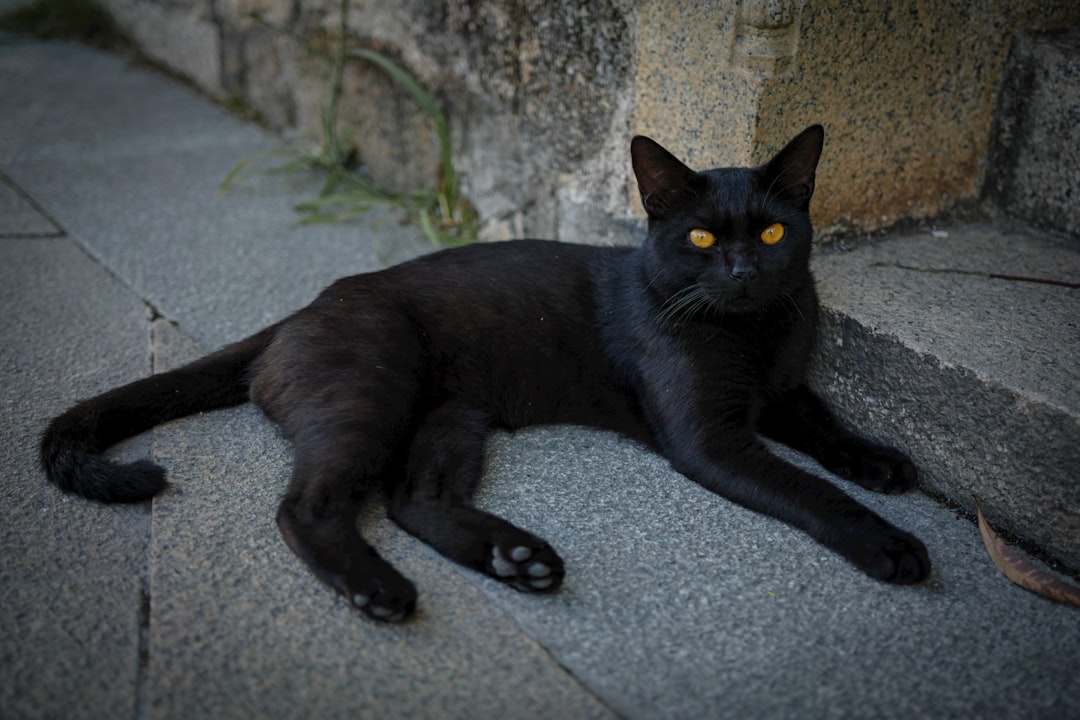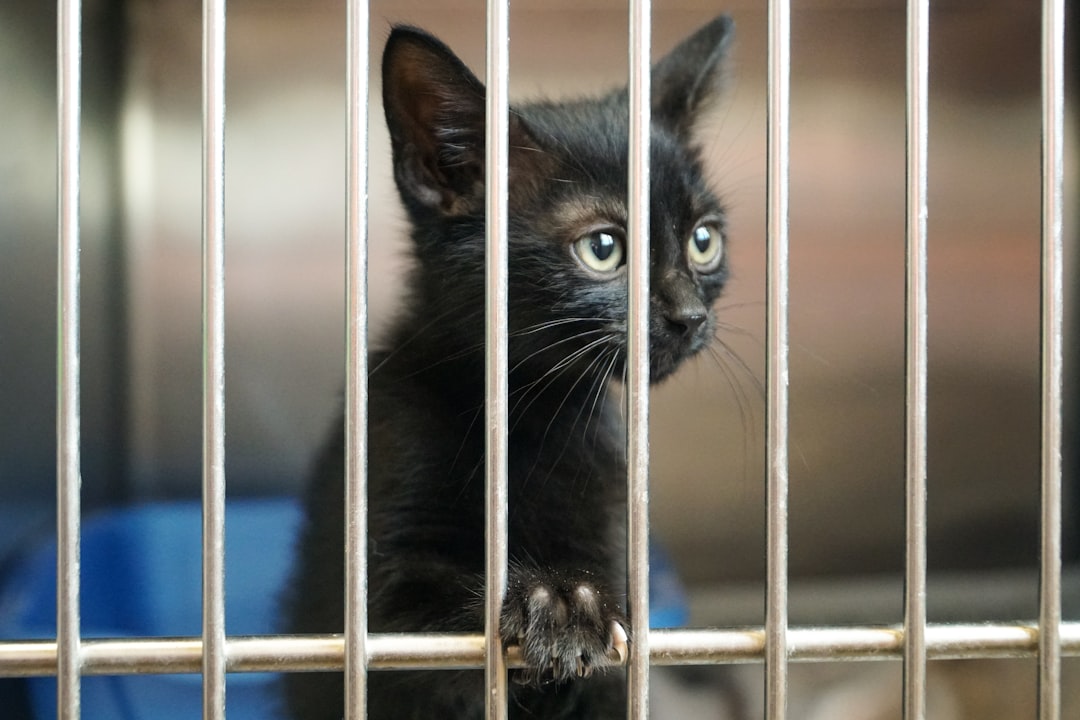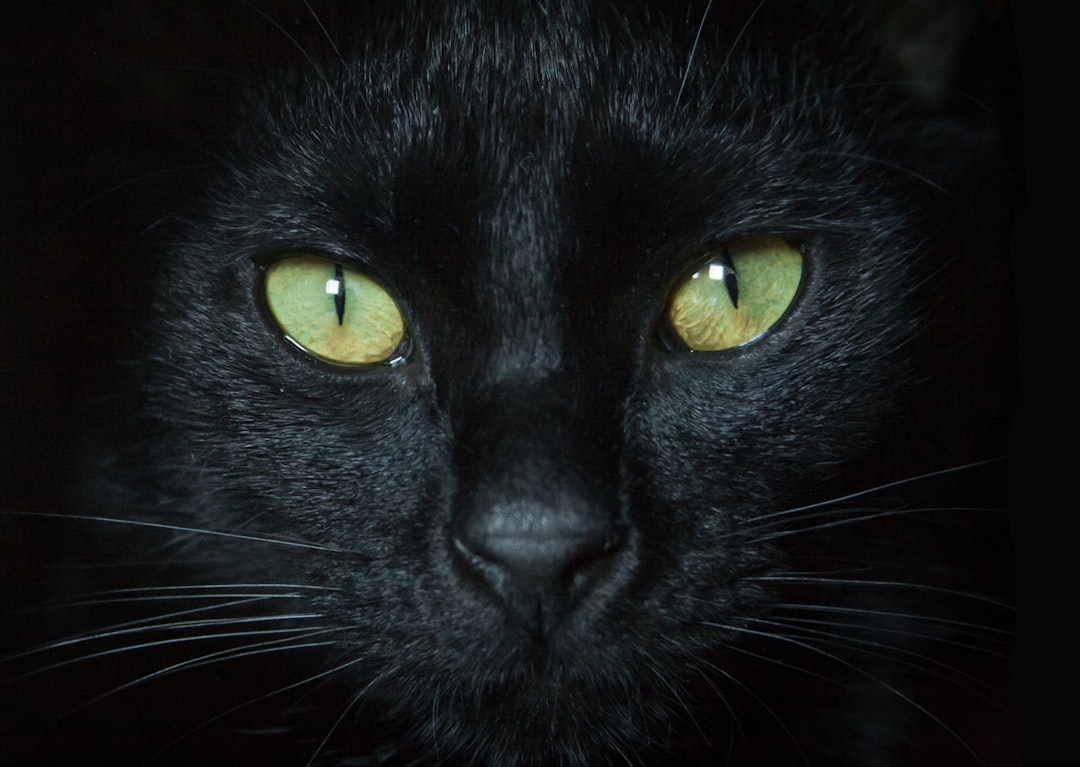You’ve probably crossed paths with a sleek black cat and felt that familiar pang of worry. Should you change your route? Did your luck just take a nosedive? These mystical creatures have sparked debate for centuries, carrying the weight of countless superstitions on their midnight-colored shoulders.
The truth about black cats is far more fascinating than the myths suggest. While some cultures view them as harbingers of doom, others celebrate them as symbols of prosperity and protection. What you might find surprising is how completely arbitrary these beliefs are, varying wildly depending on where you happen to live on this planet. Let’s dive in and separate the facts from the folklore surrounding these enigmatic felines.
The Medieval Origins of Black Cat Superstitions

The negative reputation of black cats can be traced directly back to medieval Europe, where fear and religious zealotry created the perfect storm for superstitious beliefs. The connections between humans and cats can be traced back to some of the world’s earliest civilizations, most notably, ancient Egypt, where cats were considered divine symbols. Cats also made an appearance in Greek mythology; Hecate, the goddess of magic, sorcery, the moon and witchcraft, was described as having a cat as both a pet and a familiar.
The turning point came in 1233 when Pope Gregory IX, representing the Catholic Church, proclaimed that the black cat wasn’t merely a bad omen, but an incarnation of the devil. This wasn’t just casual religious commentary; it was an official church document called “Vox in Rama” that would change the fate of black cats forever.
In addition to their early association with the devil, cats also became inextricably linked to witches in medieval Europe. According to Cerridwen Fallingstar, Wiccan priestess and author of Broth from the Cauldron: A Wisdom Journey through Everyday Magic, witches were the pre-Christian pagan practitioners of Europe. Although the early Christian church in Europe coexisted with witches, as the church gained power, she says that the organization saw witches as their direct competition in gaining the hearts and minds of the people. That’s when the church began hunting, persecuting, torturing and killing witches in vast numbers.
The belief that witches could take the form of their black cat companions, the superstition that a black cat crossing your path was bad luck materialized. This was due to the fear that the black cat in question might be carrying out a task of its witch, or worse than a witch, that it might be the devil in disguise. These fears weren’t contained to Europe; they followed colonists to the New World, where the Salem witch trials would cement black cats’ sinister reputation in American culture.
How Black Cats Became Symbols of Good Fortune Worldwide

Despite their dark reputation in Western culture, black cats enjoy celebrity status as luck-bringers in many parts of the world. The superstitions surrounding black cats vary from culture to culture, and black cats have positive associations in the Celtic nations and England, where a black cat crossing one’s path is considered good luck. In 2014, the animal welfare organisation RSPCA stated that “in UK folklore, black cats symbolise good luck”.
In Japan, black cats are good luck and are associated with Maneki-neko. Scottish culture associates black cats with prosperity and the goddess Brigid. The Japanese take this belief seriously enough that some people believe that crossing paths with a black cat will give them luck in their love life, while other people believe they will simply become luckier. When crossing paths with a black cat, some people will say, “konnichiwa,” which is a friendly greeting similar to “hello.” For those who speak to black cats, they will be able to take control of their own luck.
The Scottish have a belief that if a black cat shows up at your doorstep, then they will bring with them prosperity and success. Even more practical-minded sailors embraced these beliefs: Sailors in England once believed that black cats brought good luck and good weather to their travels. In some cases, crossing paths with a black cat was enough to rub good luck onto the sailor, but many sailors believed that the presence of a black cat or two on the ship would guarantee safe passage.
Ancient Egypt’s Divine Connection to Black Cats

Long before medieval Europe demonized black cats, ancient Egyptians held them in the highest reverence. The ancient Egyptians held all cats in high esteem, but black cats were often held in the highest esteem because of their similar appearance to the black cat-headed goddess, Bastet. Bastet was the goddess of health and protection from disease, fertility, and the home. Cats were also viewed by the ancient Egyptians as excellent at warding off disease and evil spirits.
This wasn’t merely symbolic worship; there were serious legal consequences for harming these sacred animals. Killing a cat, whether intentionally or not, often led to a swift death sentence. According to National Geographic cats were so well respected that even accidentally killing a cat would result in being sentenced to death. The practical benefits cats provided made perfect sense in an agricultural society where vermin could destroy entire food supplies.
The Egyptian reverence for cats created a template that other cultures would later adopt. Their association with protection, fertility, and divine favor would echo through various civilizations, though unfortunately, medieval Europe chose to interpret these mystical qualities in an entirely different direction. The stark contrast between Egyptian worship and European persecution shows just how culturally constructed these beliefs truly are.
The Real-World Impact on Black Cat Adoption Rates

The centuries-old superstitions about black cats continue to have devastating consequences in modern animal shelters. Black cats in shelters reportedly face higher euthanasia rates and lower adoption rates, though specific statistics vary between studies. This has to do with the negative stereotype surrounding black cats (bad luck) in addition to them being generally less photogenic in shelter pictures.
The statistics reveal a troubling pattern: According to Robert Carini, an associate professor of sociology at the University of Louisville, black cats face two less desirable outcomes at shelters: lower adoption rates and higher euthanasia rates. He and his colleagues confirmed this link in their study on what is called “black cat bias” (BCB), or “the phenomenon where cats with black coats are viewed more negatively, adopted less often, and euthanized more often than lighter colored cats”.
To find out how many days average black cats spend in the shelter before adoption, it was made a study in Colorado included more than 15,000 cats. All cats were prepared for adoption, and the result shows that studies suggest black cats may spend slightly longer in shelters before adoption compared to other colored cats. We can assume that black cats take at least 2 days longer to get adopted than other cats. Though two extra days might seem trivial, in overcrowded shelters, this difference can literally mean life or death.
Photography and Visibility Challenges for Black Pets

Beyond superstition lies a more mundane but equally significant obstacle: black cats simply don’t photograph well. Contrast in photographs. Black fur doesn’t always translate well in photographs. The lack of contrast can make it hard to capture the animal’s expressions and personality in a picture, making them appear less appealing compared to their lighter-colored counterparts.
This photographic challenge becomes even more problematic in shelter environments where first impressions matter tremendously. Beyond superstition, there are more practical reasons why black pets are often overlooked: Visibility. In shelters, where animals are often kept in dimly lit spaces or behind bars, black cats and dogs can be harder to see in detail. This can make it more difficult for them to stand out to potential adopters visiting shelters in person.
Some shelters work with professional photographers to help black pets shine in their photos for online listings, showing off their unique features and lovable personalities. However, this solution isn’t universally available, and many black cats continue to struggle with visibility issues that have nothing to do with their actual personalities or suitability as pets.
The abundance factor also plays a role: Black is a common color for many breeds, which means there are simply more black cats and dogs available for adoption at any given time. This can lead to a sort of “black pet overload,” where potential adopters feel overwhelmed by the number of similar-looking animals, making it harder for any one black cat or dog to stand out.
Scientific Evidence Debunking Black Cat Bias

Recent research challenges the long-held assumption that black cats universally struggle in shelters. In fact, black cats are not struggling to find homes – they have a strong adoption rate, with October being a particularly important month for them to find their new families. The key to understanding these trends lies in animal-level data – information that’s tied to each individual animal.
Some studies reveal a more complex picture than the “black cat bias” narrative suggests. Think black cats get adopted in lower numbers? Not so much. The data shows that Most people think that black cats bring bad luck but cat statistics show that it is only a misconception and many black cats are adopted. According to statistics, around 31% of black cats and kittens are adopted every year.
However, researchers note important nuances in their findings. This study found mixed support for the importance of coat color (H1) via three tiers of progressively better euthanasia/adoption outcomes for cats across three color groupings: black, brown and gray, and white. The evidence suggests that while black cat bias exists, it may not be as severe or consistent as commonly believed, and This data paints a different picture than the myths suggest. Specifically, there is no reliable data supporting the claim that black cats are targeted for rituals; this is widely regarded as an urban myth.
Modern Efforts to Combat Black Cat Discrimination

Animal welfare organizations worldwide are working to dispel myths and improve adoption rates for black cats. October 27 has been designated ‘Black Cat Day’ by Cats Protection in the United Kingdom, to celebrate the virtues of black cats and to encourage people to adopt an unwanted black cat. Cats Protection’s own figures suggest that black cats are more difficult for them to find a new home for than other colors. In 2014, the RSPCA reported that black cats were significantly overrepresented among abandoned cats in its care, saying that though black cats symbolise good luck in UK folklore, one reason for the high percentage of black cats in its care was that black cats tend not to photograph as well.
By raising awareness about the myths and misconceptions that contribute to lower adoption rates, we can help more black pets find the homes they deserve. So, this Halloween, let’s work together to give black pets the treat they truly deserve – a loving home. Many shelters now run special promotion campaigns featuring black cats, sometimes offering reduced adoption fees or special events dedicated to showcasing their personalities.
Thankfully, as society evolved and superstitions were debunked, black cats started to shed their sinister image. The idea that black cats are harbingers of bad luck is a relic of the past, a superstition that has no place in our modern world. Instead, black cats should be celebrated for their unique beauty, playful personalities, and their ability to be loyal and loving companions.
The movement to rehabilitate black cats’ image reflects broader changes in how we understand and relate to animals. Today, there’s a growing movement to celebrate black cats and raise awareness about their true nature. Many animal shelters and rescue organizations promote the adoption of black cats, sometimes even hosting special events dedicated to them.
Conclusion

The question of whether black cats bring bad luck has a definitive answer: absolutely not. The superstitions surrounding these beautiful animals are nothing more than cultural constructs born from medieval fear and religious persecution. While some societies branded them as devil’s companions, others celebrated them as divine protectors and symbols of prosperity.
The real tragedy isn’t the supposed curse of a black cat crossing your path. It’s the thousands of loving, affectionate black cats sitting in shelters right now, waiting longer for homes simply because of the color of their fur. Their only crime is carrying the genetic lottery ticket for melanin production.
What do you think about these superstitions now that you know the full story? Have you ever considered giving a black cat the loving home they deserve?






